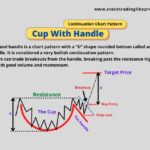Pro Traders treat Money Management for trading as an inevitable component in their trading strategy.
It is very common to hear traders who are very good with picking stocks to trade. But still fail miserably in making money out of these stocks.
Wonder, what could be the reason?
The most usual reasons are emotional trading.
Or they fail to not put a limit to their loses.
Other reasons could be risking a lot of money in a single trade.
Another common scenario is exiting trade early, even when you are in profit and losing out on the rally…
Or not booking profits or exiting when target price is met.
What’s the result?
Eventually, these novice traders lose their trading capital and get thrown out of the market.
What is required here is to follow a disciplined Money Management Strategy to survive the ups and downs of the market.
To be in business, protecting your capital is very crucial to create a sustainable trading capital.
Comprehensive risk and money management strategies should be the core of all your trading plans.
What is Money Management in trading?
By Money Management in trading, it implies
- How much money can you put in each trade?
- What is the maximum amount you can lose in a single trade and overall?
- How much do you plan to make profit?
- Ways to manage the profits?
Learning to manage your money is very important to refrain yourself from any emotional trading. Emotional Trading is the major cause of all losses in the market.
Hope, Greed, Fear can be controlled & trade in a disciplined manner if you employ a sound Money Management Strategy.
It is easy to enter a trade but managing the trade is what baffles most traders.
Trade can be managed effectively by coupling some discipline with Money Management.
A trade should always be entered thinking it could go wrong and hence appropriate. Money Management actions should be taken along with the entry.
After all, you need to preserve your capital on losing trade to stay alive and fuel your winning trades.
Money Management Trading Rules
Trade management can be implemented effectively using key Management rules like the below
1. Do not put all eggs in a single basket
Invest only 2%-5% of your trading capital on a single trade.
2. Always use a stop loss just as you enter a trade
Normally, short term traders set stop loss at 1-2% of their entry price.
But this is again entirely dependent on the risk appetite and their trading view. So, it could differ from one trader to another.
3. Follow 2% Rule
Do not risk more than 2% of your trading capital on a single trade.
Decide on how much stock quantity you can buy basis the risk exposure.
To understand this in detail, let’s use the example below
Suppose you have 1,00,000 USD trading capital.
Keeping 5% max trading capital on a single trade, you should allocate only 5000 USD on a single trade.
Following 2% Rule, 2% is the maximum you can risk on a single trade.
2% of 5000 USD = 100 USD
You plan to buy a stock at 100 USD with stop loss at 98 USD.
So, Risk per unit of trade is 2 USD.
Therefore, the total shares you can buy is
= Amount of Risk per Trade / Risk per 1 quantity of the stock
= 100 USD / 2 USD
= 50 shares
4. Calculate Risk Reward Ratio for every trade
Risk Reward Ratio lets you know when to exit a trade if it fails, and when to exit if trade is successful.
This time factor “When” is measured in monetary value through the Risk and Reward Ratio.
“Risk” – amount of money you can risk & exit, if trade fails.
“Reward” – amount of money you can make and exit the trade.
Ideally, as per rule, it is desired to have 2:1 risk reward ratio to start with. As you get more successful in your trades, you can expect more than 3:1
5. Refrain from Averaging on losing trades (which is called Martingale System)
This is a perfect recipe for a drawdown (complete wiped out of your trading capital) and should be avoided at all costs.
6. Avoid blind pyramiding when market goes into your favor.
In pyramiding, the quantity should be added in smaller quantities.
Say, Total volume you bought was 1000 Units.
You should buy additional 20% i.e. 20%*1000=200 units, only when you see the next entry opportunity.
And then 20% of 200 units etc…and so on.
7. If market moves in your favor, use trailing stop loss
Trailing Stop loss will ensure that you do not give back the profits you have earned till date.
8. Target to set your stop to the break even as soo as possible
Setting to break even as soon as market goes in your favor is a crucial part of Money Management.
Once you are breakeven, you are assured that you would not lose on this trade and prepare yourself to make & maximize profits.
But this should be done with some caution.
Because setting the stop to break even too quickly could have you wasted a good trade.
Check the market sentiments and use your good judgement before deciding to put the stop to breakeven.
9. Follow a robust trading plan
Trade with a plan to avoid emotional trading.
10. Stay out of market when in string of losses
If you are facing continuous losses in many trades, stay out of the market for few days and continue again with a refreshed mind after the break.
11. Manage your profits
To manage the profits from a trade, it is advisable to transfer half the profits to your bank account. This way, your trading capital as well as bank balance grows simultaneously.






